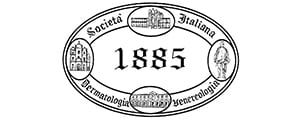VOLTAR
IMCAS World Congress 2022
IMCAS World Congress 2022
Programa
Adaptar ao meu fuso-horário a agenda da aula/congresso transmitida ao vivo
Fuso-horário de referência: (UTC+02:00) Europe, Paris
S043
Skin rejuvenation for any phototype (in collaboration with SIDeMaST)
Sala: Room 252 AB - Level 2
Data: sexta-feira 3 junho 2022 de 13:30 às 15:30
Formato: FOCUS SESSION > lectures covering a major topic of the congress
Data: sexta-feira 3 junho 2022 de 13:30 às 15:30
Formato: FOCUS SESSION > lectures covering a major topic of the congress
Apresentações desta sessão
| Horas | Palestrantes | Título da apresentação | Resumo | Número |
| 13:30 | Introduction | 110888 | ||
| 13:32 | Brazilian experience using picosecond 1064-nm Nd:YAG laser for rejuvenation | 110889 | ||
| 13:44 | New molecules in the treatment of melasma | 110894 | ||
| 13:56 | The future: What's new in devices for rejuvenation for darker skin 2022? | 110890 | ||
| 14:08 | Discussion and Q&A | 110892 | ||
| 14:18 | The new pattern: Combined side-by-side ablative and non-ablative lasers for skin rejuvenation (unrestricted educational grant from Alma Lasers) | 110895 | ||
| 14:30 | Safe and effective EBD treatment combinations for any phototype | 110893 | ||
| 14:42 | When I choose fractional resurfacing with radiofrequency versus laser | 110891 | ||
| 14:54 | Radiofrequent, mechanical stress as a way to influence the basement membrane to maintain epidermal, hyaluronic acid content | Visualizar | 114620 | |
| 15:06 | Discussion and Q&A | 110896 | ||

















